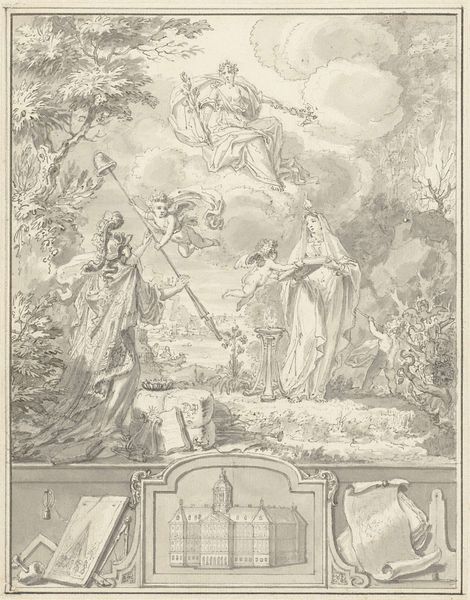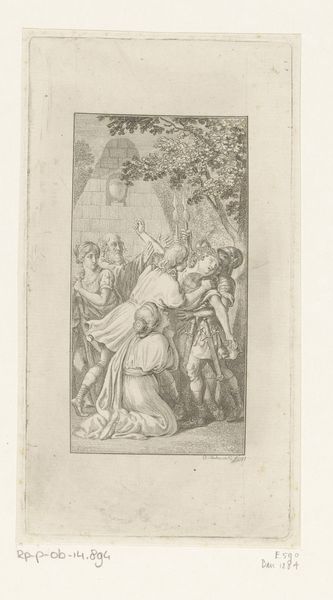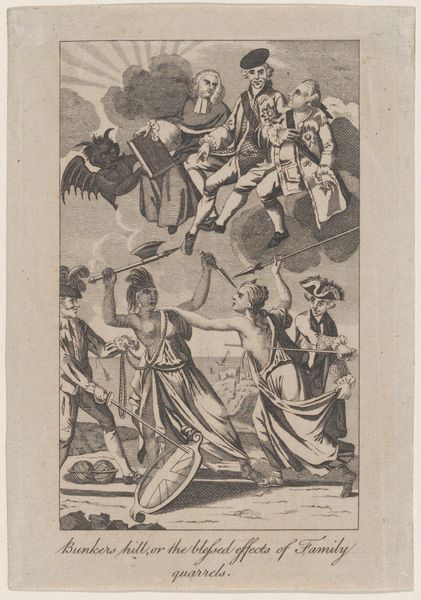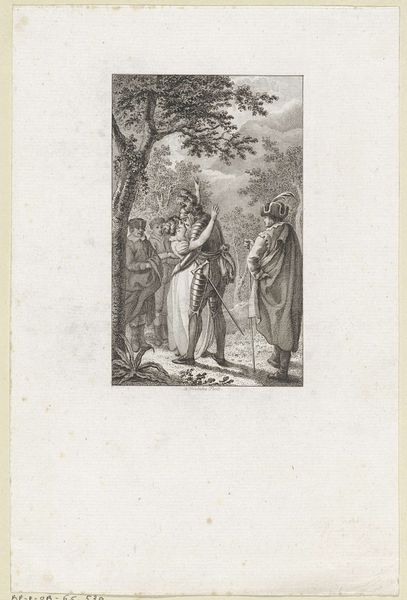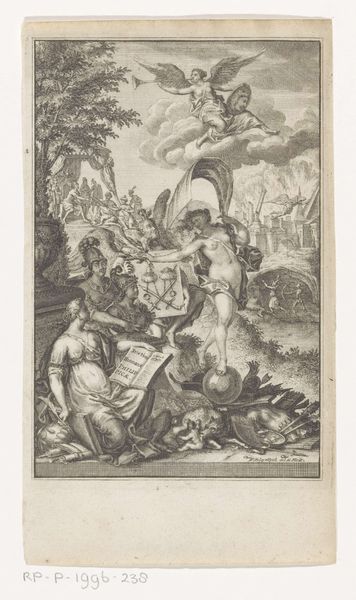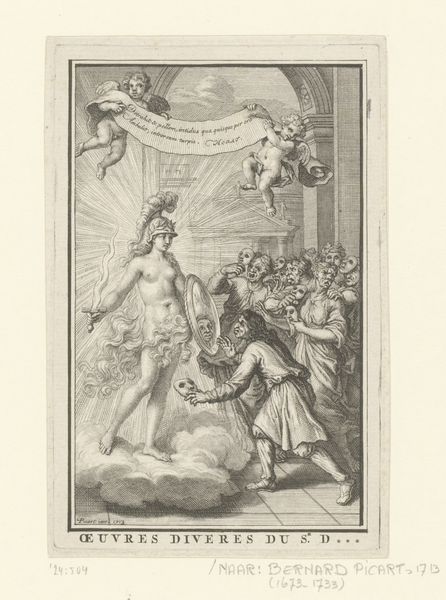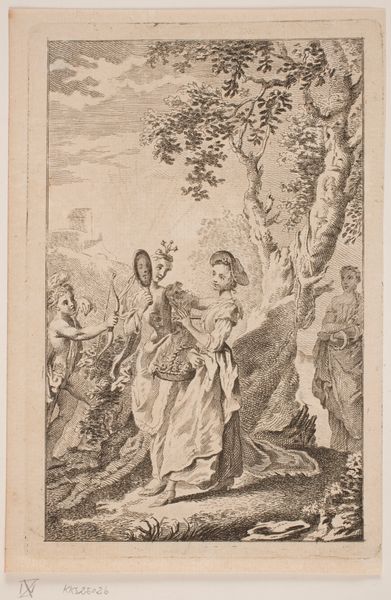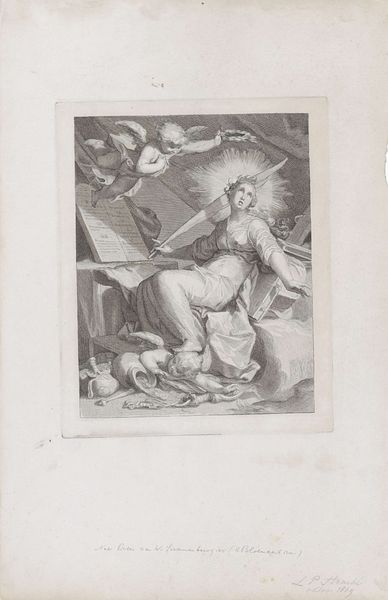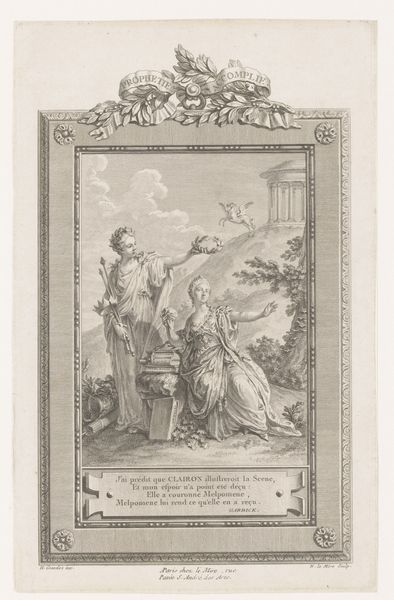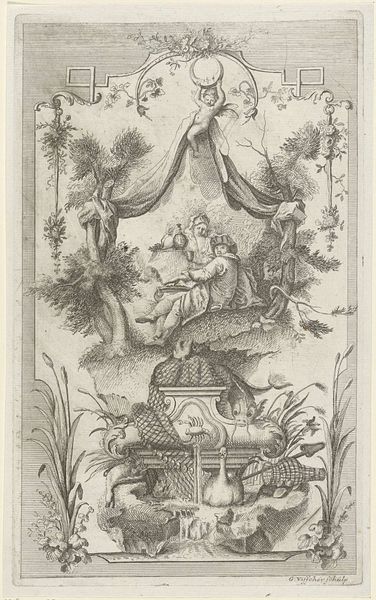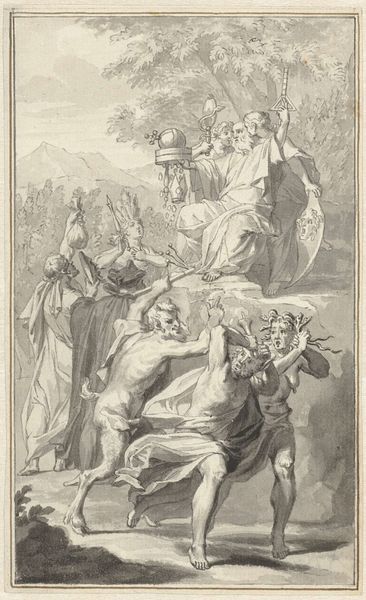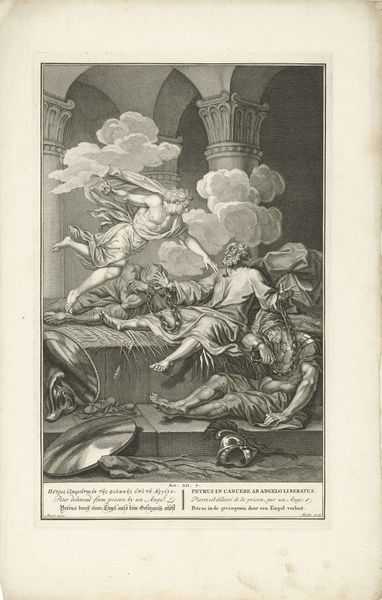
Dimensions: height 245 mm, width 150 mm
Copyright: Rijks Museum: Open Domain
Curator: What strikes you first about this engraving? It’s titled "Wedijver tussen Fortuin en de Liefde" created between 1778 and 1785 by Noach van der (II) Meer. Editor: It has a neoclassical serenity about it, even if the composition feels slightly unbalanced, almost staged. Curator: Van der Meer was working at a time of great technical advancement in printmaking, and the linear precision on display is noteworthy, especially considering the symbolic weight carried by each figure. There's Cupid, of course, alongside what appears to be Fortune and a pair of figures that seem to allegorize, on the one hand, romanticized feminine passivity, and, on the other hand, some sort of classically inspired masculine ideal. Editor: You see these as symbolic figures grappling with concepts? For me, I am interested in the way these types of gendered archetypes serve patriarchal societal expectations during the enlightenment. Who benefitted from reinforcing such strict gender roles? The labor behind producing such art pieces at this scale would also have played a key part in these systems of exploitation. Curator: The engraving itself allows us to disseminate these ideals to a wider audience and serves as both propaganda and artifact, influencing fashion, décor, and the ways the class structure reinforces these beliefs. Looking closely at how Van der Meer translates tones into etched lines really highlights how consumer culture functioned then as well. Editor: Absolutely. Think about how these prints entered into the homes of the bourgeoisie, embedding within the domestic sphere ideologies about love, fortune, and societal success. That’s an incredibly powerful and lasting impact. It's impossible to divorce these aesthetic choices from the political narratives they bolster. Curator: Understanding that the material processes themselves were entangled with systems of class and production is really essential for grasping how this period shaped the way we look at love and success today. Editor: Indeed, it all pushes us to keep asking ourselves what isn’t represented here. And that, in itself, reveals just as much about the conditions surrounding its making as anything else.
Comments
No comments
Be the first to comment and join the conversation on the ultimate creative platform.
